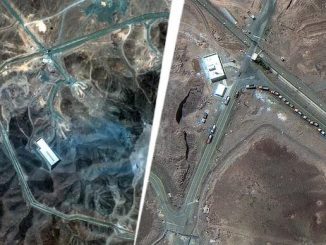
At least three Iranian planes have landed on Wednesday in the capital of Oman – the previous site of the US-Iran nuclear talks. Al Jazeera verified flight data that showed two Iranian government planes and one from Iran’s privately-owned Meraj Airlines landed in Muscat. The Iranian government has not released details on an official trip to Oman. President Donald Trump on Wednesday suggested that he had run out of patience with the Iranian regime. Earlier today, UK Prime Minister Sir Keir Starmer also chaired an emergency Cobra committee meeting to discuss the crisis, which threatens to erupt into an all-out regional war.
| Published June 18, 2025
In a striking development amid the escalating Israel-Iran conflict, three Iranian government aircraft—including the presidential Airbus—were tracked flying into Muscat, Oman, on June 18, 2025. The sudden appearance of these planes in a neutral Gulf nation renowned for quiet diplomacy has triggered intense speculation about Tehran’s next move. While Iranian officials publicly deny any delegation has been sent for talks, the high-profile nature of the aircraft involved suggests either secret negotiations, a strategic repositioning of key figures, or an urgent diplomatic maneuver in response to increasing military pressure from Israel and the United States.
✈️ What happened & what we know
-
Three Iranian government planes, including the presidential Airbus A340 and two A321s, were tracked flying to Muscat, Oman on June 18, 2025—notably during a period when Iranian airspace had been restricted due to Israeli strikes.
-
Oman has a well-established role as a diplomatic intermediary. It has previously hosted U.S.–Iran nuclear talks and often bridges communication between Tehran and Western powers.
📌 Conflicting narratives
-
Western media and flight‐tracking data suggest this could involve a high-level Iranian delegation—possibly to engage in ceasefire or diplomatic negotiations.
-
However, Iran officially denies sending a negotiating team. Foreign Ministry spokespersons, including FM Abbas Araghchi, firmly stated that no delegation has traveled to Oman.
🌍 Regional backdrop
-
Israel has launched significant airstrikes on Iranian nuclear and military targets in and around Tehran. Iran has responded with missile and drone attacks at Israel, heightening the risk of a full-scale war.
-
The U.S. has moved military assets into the region, including a striking sortie by an E‑4B “doomsday” plane, reflecting escalating readiness amid consideration of military options.
-
Oman’s role: Its neutral diplomacy and proximity to Iran (sharing the Strait of Hormuz) make it a credible venue for confidential negotiations—despite Tehran’s adamant public refusal at present.
🚨 Big Breaking 🚨
Iranian government plane just landed in Oman, where the talks with the US were previously held.
is Khamenei going to sign the surrender today ??#Khamenei #Iran #iranisraelwar #Israel #IsraeliranWar #IsraelIranConflict pic.twitter.com/Qx9AuWzj9n
— Manoj Singh (@PracticalSpy) June 18, 2025
💡 What it might mean
-
Back‑channel diplomacy
The flights may carry envoys exploring de-escalation, leveraging Oman’s discreet facilitation despite Tehran publicly downplaying any such move. -
Strategic repositioning
The aircraft could be relocating key assets or personnel ahead of potential further escalation or Israeli strikes—protecting VIPs and government functionaries. -
Diplomatic signaling
Whether or not an official negotiation is taking place, the move sends a strong symbolic message: Tehran is testing waters, positioning itself for a future turn toward diplomacy if it emerges.
שלושה מטוסים ממשלתיים של איראן המריאו בשעה האחרונה מדרום המדינה ונחתו במסקט בירת עומאן. אחד מהם הוא המטוס הנשיאותי, אשר שימש עד לאחרונה את הנשיא מסעוד פזשכיאן. מטרת הטיסה לא ברורה: האם הגיעו לשיחות תיווך בעומאן, או שמא מולטו מן המדינה ועליהם נוסעים. pic.twitter.com/GRGYEfnnmB
— avi scharf (@avischarf) June 18, 2025
 Implications
Implications
-
Possible Backchannel Diplomacy
The arrival of top-tier Iranian aircraft in Oman hints at secret negotiations or at least exploratory talks, despite Tehran’s public denial. This suggests Iran may be hedging its bets—signaling openness to diplomacy without appearing weak domestically. -
Oman as a Strategic Mediator
Oman’s involvement reinforces its traditional role as a neutral conduit between adversaries. Its hosting of these aircraft could mean that quiet U.S.- or EU-backed initiatives are underway to de-escalate the regional crisis. -
Internal Iranian Fractures
The contrast between the aircraft’s movement and Iran’s public statements points to possible internal divisions. Some factions in the regime may be pushing for diplomacy, while hardliners cling to defiance. -
Preparation for Escalation or Regime Protection
The deployment might also signal a strategic repositioning of government officials to a safer location, anticipating further Israeli airstrikes—or even the collapse of internal security. -
Signal to Global Powers
Even absent formal talks, this act sends a clear message to Washington, Tel Aviv, and Riyadh: Iran is not entirely closed to dialogue. The optics alone can influence foreign diplomatic and military responses.
 Overall Takeaway:
Overall Takeaway:
The quiet landing of Iranian government planes in Oman—despite Tehran’s public denial of negotiations—marks a pivotal moment in the Israel-Iran crisis. It reflects either a covert shift toward diplomacy, a protective move to safeguard leadership, or both. While war rhetoric dominates headlines, the behind-the-scenes maneuvering reveals that Tehran may be preparing for multiple scenarios: survival, de-escalation, or strategic recalibration. Oman’s role as a discreet diplomatic bridge underscores that even amid conflict, the path to dialogue remains quietly open.
SOURCES: THE GATEWAY PUNDIT – Iranian Government Plane Lands in Oman
THE TIMES OF ISRAEL – Three Iranian aircraft, including presidential plane, seen heading to Oman
YNET NEWS – Report of Iranian plane landing in Oman, Araghchi: ‘We did not send negotiation delegation’
ISRAEL NATIONAL NEWS – Iranian delegation arrives in Oman





Be the first to comment